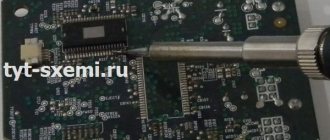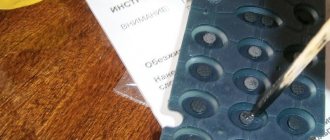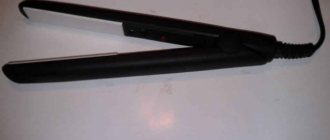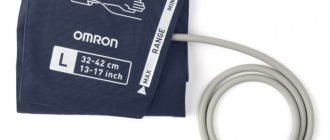One of the most common metals is aluminum. It occurs not only at work, but also at home. And sometimes it becomes necessary to connect together some parts made of aluminum or its alloys. However, doing this without special equipment is not so easy. Therefore, you should consider options for how to solder aluminum with a soldering iron at home, and what you will need for this.
Aluminum is one of the difficult-to-solder metals
Preparation for soldering aluminum parts
At the preparation stage, it is necessary to carry out high-quality cleaning of surfaces from paint, if any, and dirt. Then you should degrease the parts with gasoline, acetone or another suitable solvent.
You should also be sure to remove the oxide film that always appears on the surface of the metal after contact with air.
Important! Without preliminary preparation for soldering, it will not be possible to achieve high-quality adhesion between parts.
How to remove oxide film
You can remove the oxide film from aluminum at home mechanically. To do this, it is recommended to use an angle grinder, a metal brush, sandpaper, and a special mesh made of stainless wire.
You can also clean it chemically using acid. But at home it is used extremely rarely.
Important! After removal, the oxide film will not completely disappear, but will become much thinner, which will allow for high-quality soldering.
Methods
In order for soldering aluminum to copper to be successful, you first need to understand what kind of connections need to be created. For example, experienced craftsmen fasten wires in a refrigerator where such conductors are used only with solder recommended by the equipment manufacturers. In production and at home, it may also be necessary to connect tubular elements in an inseparable, hermetically sealed form. Only soldering fits this definition
There are a number of current ways to implement it.
- Using a steel coupling. In this case, an insert made of ferrous metal is installed between the joints of the aluminum and copper parts. Soldering is carried out on each side separately, which makes the connection more durable and eliminates problems due to differences in melting temperatures. Both copper and aluminum interact well with steel.
- Using specialized solders. The most striking example is the material produced by the Castolin brand, to which the company additionally offers a whole line of fluxes with the required characteristics. Such consumables are noticeably more expensive and are rare. They are usually used in workshops for repairing complex household appliances.
- Superficial method. It consists of using a special connection in which the copper part is inserted into an aluminum socket. Solder is applied along the edge of the wide part to close the gap. Low-melting compounds are used; when working, the master needs to capture as much of the surface of the copper part as possible. This method is applicable when working with tubular elements.
- Twists. This method allows the use of common tin-lead solder, but using specific fluxes for each metal. This eliminates the possibility of oxidation and eliminates the loss of the aluminum core's strength and initial performance characteristics. This wire soldering technology is considered acceptable, but is not recommended for use under high network loads.
- With copper plating of aluminum. In this case, contact pads are created on the surface of the metal, making it possible to form a reliable connection with copper, which is poorly compatible with it. No acid composition is used.
These are the main methods used to connect copper and aluminum elements by soldering.
Materials used in the work
For high-quality aluminum soldering, specially selected fluxes and solders should be used. This will allow you to carry out quality work.
Fluxes for aluminum soldering
Flux is an auxiliary component that prevents the formation of an oxide film during soldering. Its function is also to ensure good wetting of the surface with liquid solder, which ensures reliable adhesion.
But in the absence of flux, it can be replaced with transformer oil, having previously cleaned the surfaces with sandpaper. This will slow down the process of formation of the oxide film.
The effect of flux depends on its composition
Rosin
This type of flux is the most popular. Rosin can be used for soldering any metals. But in the case of aluminum, the work must be performed without access to air, which significantly complicates its implementation. As a result, soldering takes longer and the efficiency is low.
Important! When using rosin, the quality of the aluminum connection is not particularly strong.
Powder flux
For soldering aluminum, you can use powder fluxes together with a gas torch. When carrying out work, oxygen should not be added to the flame, as this causes oxidation of aluminum.
The most common powder fluxes:
- borax (a mixture of sodium salt and boric acid);
- active flux F-34A (contains potassium, lithium, zinc chlorides and zinc chloride);
- acetylsalicylic acid;
- active solder fat.
Liquid flux
This type of flux can be applied to the surface in a thin layer. But at the same time, they evaporate much faster and are capable of releasing scalding vapors.
The most popular types:
- flux F-61—recommended for low-temperature soldering;
- flux F-64 - destroys even a fairly strong oxide film;
- Castolin Alutin 51 L - suitable for work at temperatures from 160 degrees.
Solder for soldering aluminum and its alloys
To solder this metal, it is recommended to use solders made from materials such as aluminum and zinc. Moreover, they can contain various additives, which improves their functionality.
The most popular imported solders for aluminum:
- HTS-2000;
- Castolin 192FBK;
- Castolin 1827;
- Chemet Aluminum 13;
- Chemet Aluminum 13-UF.
Important! The solder must wet the surfaces of the parts well, otherwise high-quality soldering will not be possible.
Domestic solders and their quality
Domestic solders can also be used to work with aluminum parts at home. They are not inferior in efficiency to imported ones, but are much cheaper.
The most popular of them:
- POS-61;
- grade A;
- 34A;
- SUPER A+.
Comparison of solders for aluminum soldering
When comparing imported solders HTS-2000 with Castolin 192fbk, as well as domestic “aluminum cucumber”, many professionals note that the latter has high soldering strength, since it consists of aluminum. But its disadvantage is that the work must be carried out in the oven.
As for HTS-2000, the reviews are mostly negative, since the solder has a viscous consistency and you should use steel tools to level it on the surface.
Castolyn 192FBK is also characterized by high fluidity. It is ideal for soldering small holes, but when used for large holes it can fall inside aluminum parts.
When choosing solder, you need to consider the soldering mode
Cored wire
This material can only be used when welding aluminum, not soldering. Therefore, these two completely different types of work on connecting parts should not be confused. The use of flux-cored wire makes it possible to weld without gas.
Heating sources
To properly solder parts, you need not only to know what fluxes and solders can be used, but also how to solder aluminum at home with a soldering iron, using different heat sources.
Soldering iron for soldering aluminum
When using a soldering iron, you need to consider the size of the parts to be connected. The amount of heat from the source must be greater than it will be dissipated. Approximately 1 thousand sq. cm of aluminum dissipates about 50 W of thermal power. This means that to solder parts with such a total area, you need to use a soldering iron with a power of 90-100 W.
Aluminum soldering torches
If you need to solder thick aluminum sheets, it is better to use gas torches. The advantage of such a source is that it delivers heat without contact and is characterized by a high heating rate.
Important! When using a torch, the parts may not even have time to heat up before they are already soldered.
How to remove oxide film?
The aluminum oxide film is removed in two ways: mechanical and chemical. Both methods remove aluminum oxide in an airless environment, that is, without access to oxygen. Let's start with the most difficult, but most correct and reliable method of removal - chemical.
Precipitate copper or zinc
The chemical soldering method is based on the preliminary deposition of copper or zinc onto aluminum by electrolysis. To do this, apply a concentrated solution of copper sulfate to the desired location and connect the negative of the battery or laboratory power source in a free place. Then take a piece of copper (zinc) wire, connect a plus to it and immerse it in the solution.
Through the process of electrolysis, copper (zinc) is deposited onto the aluminum and adheres to it at a molecular level. Then aluminum is soldered on top of the copper. True, it is not clear how all this passes through the oxide barrier. I think that this instruction skips the step of scratching aluminum under a film of copper sulfate or other chemical exposure. Although the practice from the video below shows that you don’t have to scratch.
Use oil without water
The second most difficult method is to remove the aluminum oxide under the oil film. In this case, the oil should contain a minimum of water - transformer or synthetic oil will do. You can hold the oil at a temperature of 150 - 200 degrees for several minutes so that the water evaporates from it and it does not splash when heated.
Under the oil film, you also need to remove the oxide. You can rub it with sandpaper, scratch it with a scalpel, or use a serrated tip. When I needed to solder the engine cooling radiator, I used the chip method. We take a nail, saw it with a file to get steel shavings.
Next, apply oil to the soldering area and sprinkle chips. Using a soldering iron with a wide tip, we try to rub the soldering area so that there are shavings between the tip and the aluminum. In the case of a massive radiator, I additionally heated the tinning area with a hot air soldering station.
Then we take a drop of solder onto the tip, immerse it in oil at the soldering site and rub it again. For better tinning, you can add rosin or other flux. The so-called surfacing under a layer of flux occurs. The video shows a good example of soldering aluminum with oil.
Solder with active flux
There are separately developed active fluxes for soldering aluminum. They usually contain acids (orthophosphoric acid, acetylsalicylic acid) and salts (sodium salt of boric acid). Strictly speaking, rosin also consists of organic acids, but in practice it gives a weak result on aluminum.
Due to their activity, acid fluxes must be washed off after soldering. After the first wash, you can additionally neutralize the acid with alkali (soda solution) and wash it a second time.
Active fluxes give good and quick results, but inhaling the vapors of this flux is strictly prohibited. Vapors irritate mucous membranes, damage them, or can enter the bloodstream through the respiratory tract.
Soldering aluminum components
You can solder aluminum at home with a soldering iron at both high and low temperatures. But the process of carrying out work in these cases is somewhat different.
Soldering aluminum at high temperatures
This method is used to connect large elements. This category includes aluminum parts with a thick wall and increased weight. In this case, the heating temperature should be in the range of 550-650 °C. A gas burner should be used as a heat source.
Soldering must be carried out after heating the parts to the desired temperature, which will lead to melting of the hard solder.
Soldering aluminum at low temperatures
This soldering method is more suitable for bonding small parts, aluminum wires, and cables. In this case, a temperature of 250-450 °C is sufficient. For this mode of work, liquid solders must be used.
At low temperature conditions the seam is smooth and neat
Which is better: welding or soldering aluminum
It’s impossible to say unequivocally that welding or soldering aluminum is better. It depends on the purpose of the parts and the professionalism of the person. For an experienced welder, welding is naturally a more acceptable option, while soldering is more suitable for a craftsman with a soldering iron.
If it is necessary to repair the radiator, it is better to use soldering, since it is much cheaper, and welding is more suitable for carrying out more critical work.
Soldering aluminum is a complicated process, but you can do it yourself at home. However, carrying out work without the use of special materials does not guarantee high-quality adhesion of parts. This will only lead to wasted time and effort. Therefore, you need to immediately prepare for the procedure in order to carry it out efficiently and quickly.
Selection of fluxes
Taking into account the specifics of soldering aluminum parts, the choice of fluxes must be approached carefully.
There are domestic products consisting of several components. They provide effective cleaning of parts and prevent oxidative processes when heated. This is especially true when using tin and lead solders, which are known to be susceptible to oxidation.
Good penetrating ability is provided by a multicomponent flux made from ammonium and zinc fluoroborates, triethanolamine, and additives. The product has an affordable price. Its effectiveness has been tested many times in practice.
A well-known high-temperature flux consists of potassium, lithium and zinc chlorides; sodium fluoride. The dry mixture is poured into the soldering work area on a stick, waiting for uniform melting and mixing with the solder mass.











